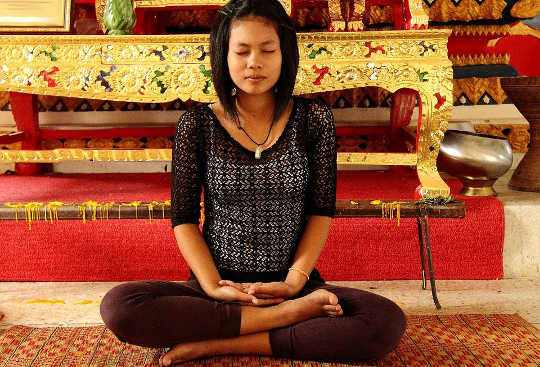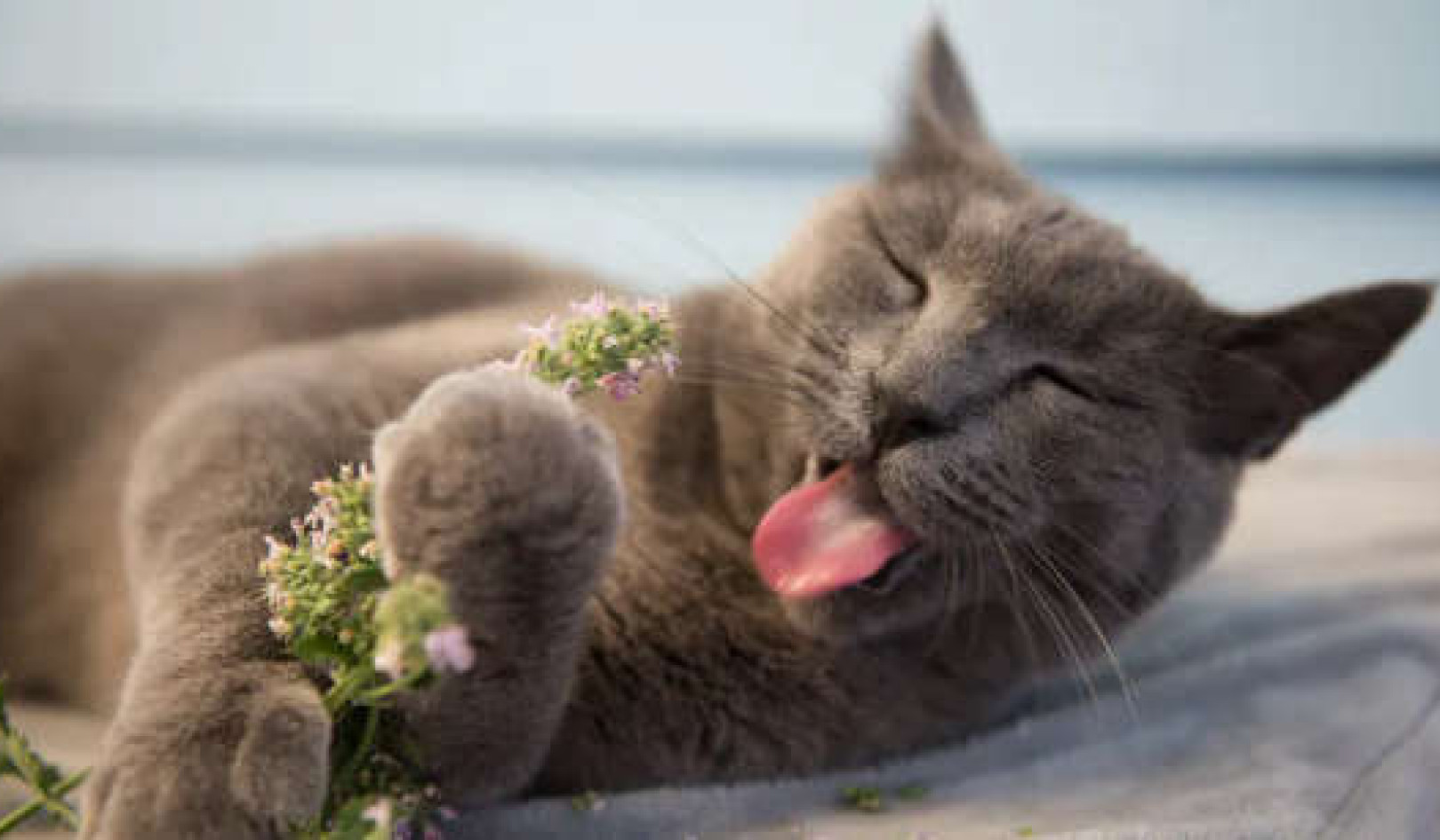 Image by Dean Moriarty
Image by Dean Moriarty
Prana is the vital force that pervades the whole cosmos. Though closely related to the air we breathe, prana is a more subtle energy – the energy essence within everything in the universe.
Pranayama is a series of breathing techniques that stimulate and increase prana, and ultimately bring about control over the flow of prana in the body.
Channelling Prana
Many ancient cultures, such as the Incas, Egyptians and Tibetans, believed in and taught breathing exercises for healing purposes and to raise consciousness. Mystics and gurus believed that practising pranayama led to the experiencing of the true self and the universe.
The Christ talked about the sacredness of the breath in the Dead Sea Scrolls: ‘We revere the holy breath which is beyond all creation. For behold, the eternal, highest realm of light, where the infinite stars reign, is the realm of air, which we inhale and exhale. And in the moments between inhalation and exhalation, all the mysteries of the eternal garden are hidden.’
Get The Latest By Email
The Buddha used conscious breathing to achieve enlightenment and the Native American Indians and the Sufis include breathing practices in their initiation rites. The Indian guru Maharishi Mahesh Yogi, who developed the Transcendental Meditation technique, said: ‘Through control of the breath we achieve control over the mind, and by controlling the mind we return to the original state of Eden.’
The ancient yogis measured a person’s lifespan not in years but by the number of breaths they took per minute. They believed that a person who breathes in short, quick gasps is likely to have a shorter lifespan than a person who breathes deeply and slowly. This information they gleaned from animals living in the forest. They noticed that animals with a slow breathing rate, such as tortoises, elephants and snakes, lived longest, but animals with fast breathing rates, such as rabbits, birds and mice lived for a relatively short time.
The Flow of Prana
Pranayama shouldn’t be seen merely as a set of breathing exercises that increase the body’s intake of oxygen (although important), but also as a way to affect the flow of prana [vital force or energy] through the nadis [energy channels], to purify them and induce physical and mental stability.
Prana is the medium that links the body with the soul. It’s the connecting force between consciousness and matter, and it activates the physical body through the nadis. Primarily, pranayama ensures that the flow of prana throughout the etheric sheath is free and unimpeded so that the physical body is kept strong and healthy.
For around 2 hours a day, either the right or left nostril is dominant. The flow of air through the left nostril is closely connected with the flow of prana in the pingala nadi, and the flow of air through the right nostril is linked with the ida nadi. The only time when both nostrils are open is just before dawn, when the sushumna opens to allow the flow of the kundalini energy. For this reason, meditation should be practised just before dawn.
Breathing Exercises
Most of us breathe incorrectly, using only the upper part of our lungs. When our breathing is shallow, our body and brain can be starved of oxygen and life force. Shallow breathing also allows stagnant air to build up in the lower regions of the lungs.
When you first start to practise deep breathing, it’s important to listen to your body. Wear loose clothing so your body isn’t restricted. Cotton clothing is preferable to synthetic fibres, which are believed to restrict the movement of our aura. Your spine should be in an upright position, with the shoulders taken back and down. This allows for expansion of the lungs and for the diaphragm to descend into the abdominal cavity during inhalation.
If you start to become breathless, stop your deep breathing and return to normal breathing. If you start to feel dizzy, again stop your breathing exercise and return to normal breathing. Feeling dizzy could mean that you’re hyperventilating or taking more oxygen into the body than it’s used to.
Initially, practise your breathing exercises for a maximum of 5 minutes daily, gradually increasing this time as the body gets used to the greater intake of oxygen. Always practise in a well-ventilated room, preferably by an open window. And don’t eat for at least 4 hours before practising asanas or pranayama. Try to stay focused on the breath throughout your practice time.
Practising pranayama before working with the asanas that activate the triangles of light in the body is beneficial, because through the breath the nadis are recharged with pranic energy. If an exercise indicates retention of the breath, don’t hold it for longer than is comfortable. For those who are new to pranayama, start with the first two exercises before moving on to the next, more advanced examples.
Abdominal breathing
Lying flat on the floor, place one hand on your navel. Make sure that your chin is tucked in to prevent strain on the cervical part of your spine. If you find this difficult, place a small cushion beneath your head. When practising the exercise, make sure that you don’t move your chest or shoulders. Inhale deeply, noticing how your hand rises with the expansion of your abdomen. Now deeply exhale and notice how the hand moves down as your abdomen contracts. Continue to practise for around 5 minutes.
Chest breathing
Lying on the floor with your arms by your side and your chin tucked in, inhale and expand your chest while keeping the abdominal muscles contracted. Notice how the whole of your rib cage starts to expand, moving outwards and upwards. Exhaling, notice how the rib cage collapses as the ribs move inwards and downwards. Try not to move the abdomen during this exercise.
Yoga complete breath
This exercise combines the two exercises above. With practice, it allows the optimum amount of air to be taken into the lungs and the maximum amount to be expelled. The exercise can be practised sitting on a straight-backed chair, with both feet on the floor and the hands placed palms-down on the thighs, or sitting on the floor in either the full or half lotus posture, if you’re already familiar with these, or with the legs stretched out in front of the body – again with the hands resting palms-down on the thighs.
First, exhale fully through the nose. Now start your slow, smooth inhalation, expanding first the abdomen and then the chest until the maximum amount of air has been taken into the lungs. Now exhale by releasing air first from the chest, then from the abdomen and finally by contracting the abdominal muscles to allow the maximum amount of air to be expelled from the lungs.
The inhalation and exhalation should take the same length of time, so when you first practise this exercise you might find it helpful to count to seven for both the inhalation and exhalation. If the count of seven is too long for you, reduce the count to four or five. If the count is too short, then increase the number to a count that feels comfortable. With practice, you’ll find that you’re able to increase the count on both the inhalation and exhalation.
Alternate-nostril breathing
The breathing technique sukh purvak, or alternate-nostril breathing, maintains a balance in the constant interplay of positive-negative pranic currents. Everywhere in the external world, we encounter manifestations of the positive-negative principle. We find it in the composition of the atom, in the cell, in the polarity of the Earth, in the sun and moon, and in the man and woman relationship. In those dimensions of existence that we gradually come to perceive through our inner vision, the same negative-positive relationship occurs.
Sitting either on a chair or on the floor, make sure that your spine is straight and your body relaxed.
- Place your right thumb lightly against your right nostril, your index and middle fingers on your forehead, between and just above your eyebrows, and your fourth and little finger lightly against your left nostril.
- Exhale deeply through both nostrils.
- Press the left nostril closed with your fourth and little fingers and quietly inhale deeply through the right nostril to a count of eight.
- Close both nostrils and retain the breath for a count of four, applying the three bandhas.
- Release the bandhas, open the left nostril and exhale through it to a count of eight.
- Close both nostrils, apply the bandhas and hold the exhalation to a count of four.
- Release the bandhas and inhale through the left nostril to a count of eight.
- Close both nostrils, apply the bandhas and retain the breath for a count of four.
- Release the bandhas, open the right nostril and exhale through it to a count of eight.
- Close both nostrils, apply the bandhas and hold the exhalation to a count of four.
- Release the bandhas and inhale through your right nostril to a count of eight.
This completes one round. Without pausing, perform ten more rounds – increasing the number of rounds with practice. Your aim is to eventually breathe in to eight, hold for eight, breathe out to eight and then hold the breath out to a count of eight. When you first work with the exercise, it’s advisable to omit retaining the breath. Retention of the breath, with the application of the bandhas, can be practised at a later date. On completion of this exercise, place your hands on your thighs and breathe normally for a few minutes.
Alternate-nostril breathing is an indispensable prelude to meditation. It brings about calmness and tranquillity and clears the nadis. The flow of prana in the ida and pingala nadis is equalized, and the whole body is nourished by the extra supply of oxygen. This leads to an improvement in your health.
Visualizing white pranic light
When you’ve become familiar with the alternate nostril breath, bring into it the visualization of white pranic energy. During each inhalation, visualize breathing in an intense white light. Imagine the light circulating throughout all the nadis in order to cleanse and vitalize them. When you exhale, visualize breathing out any disharmony.
Humming breath
Sit either on a chair or on the floor, and make sure that your spine is straight and your body relaxed. Breathe in deeply. Then, on a slow exhalation, hum softly to make the sound of murmuring bees. Continue for as long as is comfortable.
This breathing exercise is helpful prior to relaxation and for those who suffer from insomnia. When you’ve finished, lie down on the floor and relax.
Cooling breath
Sit either on a chair or on the floor, and make sure your spine is straight and your body relaxed. Place your hands on your thighs. Form your mouth into an O shape. If you can, fold the sides of your tongue to form a narrow tube and extend this just outside the mouth. Inhale slowly and deeply through the folded tongue. Relax the mouth and exhale slowly through your nose. Start with nine rounds and, over time, gradually increase this to sixty rounds. Because the tongue is a mirror image of the whole body, inhaling air through the folded tongue cools the air we’re inhaling, thereby cooling the whole body.
This breathing exercise initiates relaxation and tranquillity of mind. It also encourages a free flow of prana throughout the body.
Viloma pranayama
Caution: Don’t perform this exercise if you have heart problems.
This breathing exercise involves a series of interrupted inhalations or exhalations with pauses, hence its name: ‘viloma’ means ‘against the grain’, or ‘against the natural order’. The exercise can be performed either in a sitting or lying position. If you’re sitting, keep the back erect and the head lowered, so the chin rests in the notch between the two collar bones.
Version 1 (interrupted inhalation) is especially beneficial for those with low blood pressure. If you suffer from high blood pressure, follow version 2 (interrupted exhalation); it’s also recommended that you perform the exercise lying down.
Version 1 (for those with low blood pressure)
- When you’re ready to begin, inhale for 2 seconds then pause for 2 seconds; holding the breath, again inhale for 2 seconds and again pause for 2 seconds, holding the breath. Continue in this way until the lungs are completely full.
- Now hold the breath in for 5–10 seconds.
- Now exhale slowly, making a humming sound.
- This completes one cycle. Repeat for ten to fifteen cycles.
Version 2 (for those with high blood pressure)
- With the chin resting in the notch of the neck, take a deep breath through clenched teeth to a hissing sound.
- When the lungs are full, hold the breath for 10–15 seconds.
- Now exhale for 2 seconds, then pause for 2 seconds; exhale for 2 seconds three pause for 2 seconds. Continue in this way until you’ve expelled as much air as possible from the lungs.
- This completes one cycle. Repeat a further ten to fifteen times, then lie down and relax.
It’s recommended that you master the humming breath before working with this breathing exercise.
*****
Regular performance of the breathing exercises in this chapter should improve the health and vitality of your physical body. Breathing exercises can be dynamic, or they can be passive. They can restore energy and vitality to every atom and cell and they can promote relaxation,
healing and peace.
©2019 by Pauline Wills. All Rights Reserved.
Excerpted with permission from the book: Yoga oif Light.
Publisher: Findhorn Press, a divn. of Inenr Traditions Intl..
Article Source
Yoga of Light: Awaken Chakra Energies through the Triangles of Light
by Pauline Wills Drawing on yoga’s original teachings, Yoga of Light reveals how to awaken and energize the chakra triangles of light with the practice of asanas, breathing, visualization, and meditation. Exploring the universal web of light and our place within it, as well as the body’s electromagnetic field, or aura, yoga expert Pauline Wills provides a concise introduction to the ten major and twenty-one minor chakras instrumental in forming the yoga triangles of light. (Also available as a Kindle edition.)
Drawing on yoga’s original teachings, Yoga of Light reveals how to awaken and energize the chakra triangles of light with the practice of asanas, breathing, visualization, and meditation. Exploring the universal web of light and our place within it, as well as the body’s electromagnetic field, or aura, yoga expert Pauline Wills provides a concise introduction to the ten major and twenty-one minor chakras instrumental in forming the yoga triangles of light. (Also available as a Kindle edition.)
About the Author
 Pauline Wills, a professional reflexologist and instructor with more than a decade of experience in England and Ireland, combines yoga and color therapy in her practice of reflexology. She is the author of several books on healing, including The Reflexology and Colour Therapy Workbook.
Pauline Wills, a professional reflexologist and instructor with more than a decade of experience in England and Ireland, combines yoga and color therapy in her practice of reflexology. She is the author of several books on healing, including The Reflexology and Colour Therapy Workbook.







